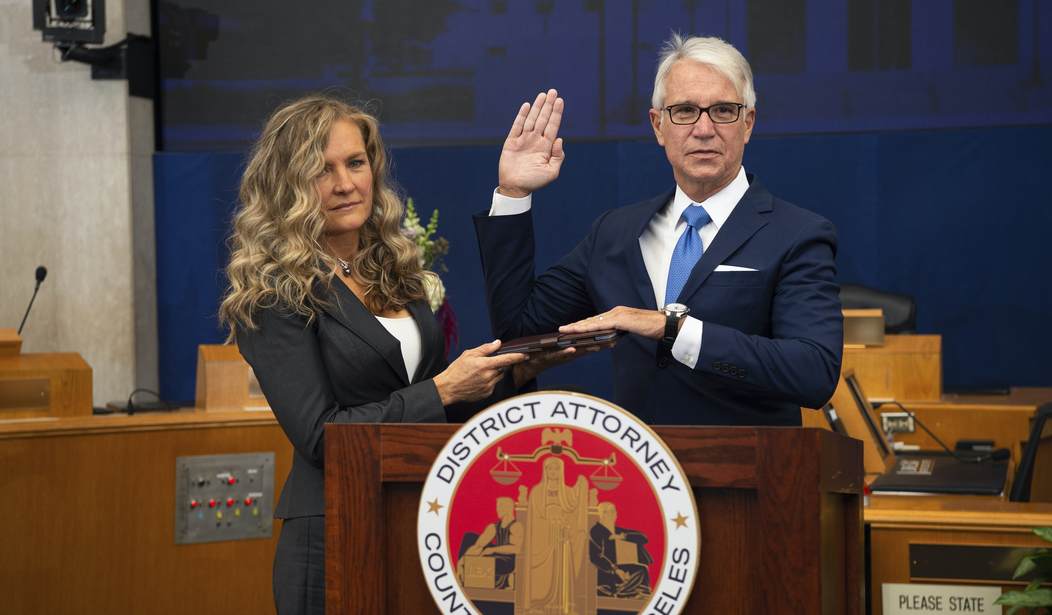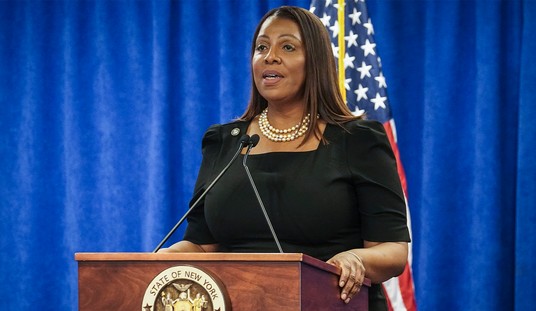What value is there in a newspaper that ignores or subverts the truth in the service of some fashionable agenda? And if this abuse of what once were universally observed journalistic standards isn’t shameful enough, how much worse is it when it results in needless death and bloodshed?
It should be obvious to anyone not ideologically blinkered that the Los Angeles Times has wed itself to the social justice cause, so inextricably so that no one at the paper seems cognizant of the fact that social justice, with its appeals for compassion for criminals, comes at the expense of actual justice and the welfare of crime victims.
The Los Angeles Times is hardly alone in its descent into woke activism. Indeed, the entire mainstream media complex seems to have abandoned its pretense of objectivity (and it has long been just a pretense) in favor of open left-wing activism. Nowhere is this more evident than in the reporting on issues relating to crime.
On Tuesday, the L.A. Times ran a story concerning one of the paper’s favorite ongoing themes, to wit, allegations of bias on the part of Los Angeles Police Department officers patrolling the more crime-ridden sections of the city. “LAPD admits it made hundreds more traffic stops in South L.A. than it told The Times,” reads the headline, reflecting the glee no doubt shared at the newspaper that the Department had been caught providing inaccurate data regarding this contentious issue.
This is not to excuse providing bad data to the Times, but the story itself seems to be more concerned with the “gotcha” aspect than with the far more important issue underlying the data, which is the problem of violent crime in Los Angeles, particularly in South L.A.
What’s more, the story is a muddle of unclear information from which the reader is unable to draw a sound conclusion. Times staff writer Kevin Rector opens the story with the “gotcha.” “Los Angeles Police Department officials earlier this month downplayed a return to controversial investigative traffic stops in South L.A.” he writes, “in part by telling The Times that the number of stops was dramatically lower than it used to be — with just 74 stops so far this year.” He goes on to cite the belatedly revealed accurate data. “But on Tuesday,” Rector writes, “LAPD Chief Michel Moore told the L.A. Police Commission that figure was wrong, and that the true count was more than eight times as high, with 639 stops having been conducted.”
The L.A. Times Says There’s a ‘SWAT Mafia’ in the LAPD – the Statistics Say Otherwise
Only by reading deep into the story, and by reading a linked Feb. 12 article, also by Rector, can the reader learn that it is stops by Metropolitan Division officers that is being discussed. Officers assigned Metropolitan Division, or Metro, do not respond to routine radio calls. Rather, they are traditionally deployed to inhibit crime in those areas of the city where it is most disruptive, which in Los Angeles means the four patrol divisions that make up South L.A.: Newton, Southwest, 77thStreet, and Southeast. (I worked at all of these stations at various times in my LAPD career.) L.A. Mayor Eric Garcetti and LAPD Chief Michel Moore were characteristically spineless and curtailed the patrols in 2019 after the L.A. Times ran stories claiming the tactic “disproportionately affected Black and Latino drivers.”
It would have been malfeasance on the part of the police had the stops not done so. Consider: these four divisions (of the LAPD’s total of 21) are home to about 640,000 people, or 16 percent of the city’s population, yet they accounted for 44 percent of the 349 homicides investigated by the LAPD in 2020. Nearly every single resident of these areas is black or Hispanic, as were the homicide victims and those who killed them.
The LAPD no longer publishes the racial breakdown of homicide victims and suspects as it once did, but it’s fair to assume that the city’s homicide figures run parallel to those of Los Angeles County, of which L.A. is by far the largest city and biggest driver of crime numbers. (Los Angeles County has about 10 million residents, of whom about 4 million live in the city of L.A.) According to the L.A. Times Homicide Report, last year there were 691 homicides committed in L.A. County, excluding those killed by police. Of these victims, 50 percent were Hispanic, 35 percent were black, 10 percent were white, and 5 percent were Asian. The county’s population is 47 percent Hispanic, 26 percent white, 15 percent Asian, and 9 percent black.
From these numbers one can see that homicide figures do not track perfectly with each racial and ethnic group’s share of the overall population. Yet the Los Angeles Times continues to insist something nefarious is afoot when LAPD stop figures align more closely with crime patterns than with population data. “The move to reinstate ‘investigative stops,’” writes Kevin Rector in the Feb. 12 story, “immediately raised concerns among some longtime police observers at a time of increased scrutiny over LAPD tactics in communities of color.”
As is now oh so fashionable, these “longtime police observers,” to include the writers and editors at the Los Angeles Times, apparently, are more discomfited by the prospect of police officers conducting investigative stops in high-crime neighborhoods than they are by the crime itself. It is precisely in those “communities of color” that law-abiding residents are most in need of protection from those who would prey on them.
Black Chicagoans Eviscerate Black Lives Matter Narrative, Booting Activists From Their Neighborhood
And yet the L.A. Times, along with nearly any other media outlet you can name, continues to peddle the lie – there is no better word for it – that what is most injurious to these “communities of color” is police harassment rather than the crime police seek to prevent.
How else to explain the paper’s uncritical devotion to George Gascón, L.A. County’s new district attorney and the latest of the George Soros-funded “progressive” prosecutors elected to office? The Times endorsed Gascón over incumbent Jackie Lacey last fall, and in the last two months has printed two editorials (here and here) defending Gascón and his lenient policies, the effects of which are fewer criminals sent to prison and shorter sentences for those who are.
Granted, Gascón was only recently elected, and one may argue, as does the L.A. Times, that his policies should be given time to bear their intended fruit. But what evidence is there that the fruit will be any less poisonous than that already produced in cities where progressive prosecutors have held office for longer? Larry Krasner took office as district attorney in Philadelphia on Jan. 1, 2018, and homicides in that city rose by 8 percent that year. Homicides declined by 1 percent in 2019, offering a hopeful sign, but then rose by 35 percent in 2020. They’re up an additional 33 percent so far this year.
In Chicago, Kim Foxx ran on a progressive platform and took office as state’s attorney for Cook County on Dec. 1, 2016, and was re-elected in 2020. Homicides in the city declined from 769 in 2016 to 492 in 2019, but then increased horrifyingly to 792 last year.
Chesa Boudin, district attorney for San Francisco, is the son of Weather Underground members and convicted murderers Kathy Boudin and David Gilbert, a lineage that would understandably warp one’s views on law and order. He was elected in 2019 after promising progressive reforms to the criminal justice system in that most progressive of cities. The results so far? San Francisco saw a 17 percent increase in homicides in 2020.
In short, there is precious little to suggest the progressive policies instituted by this new wave of prosecutors have brought about anything but a rising tide of bloodshed among the very populations they claim to champion. The only people profiting from all this “progress” are the undertakers.
It was the tough-on-crime measures enacted in the early and mid-1990s that stemmed the rising tide of violence seen across the country (2,245 homicides in New York City in 1990, 1,092 in Los Angeles and 943 in Chicago in 1992) and brought about the relative placidity of recent years. Those gains have been reversed with staggering speed, all with the blessing of these progressive prosecutors and their enablers in academia and media outlets like the Los Angeles Times, all of whom share the naive, even childlike belief that showing compassion for the cruel will make them less so.
You can run only so far from reality. Like a bullet, it catches up with you quickly.










Join the conversation as a VIP Member